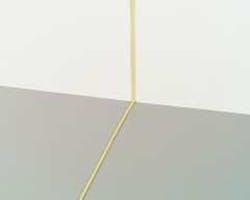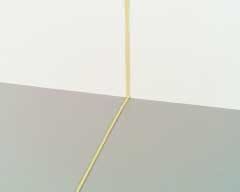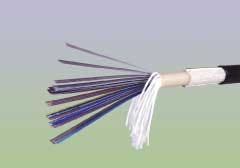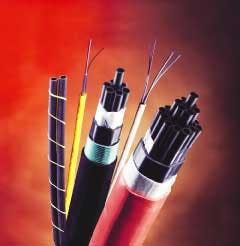Better access: Where no fiber has gone before
The heyday of the 1990s driven by high valuations and "technology for technology's sake" are certainly over. The optical communications industry is refocusing its attention on meeting the demands of network end users—the source of revenues and recovery for service providers. Continuous innovation is still the lifeblood of corporate and industry longevity, however. In telecommunications, when the going gets tough, the tough get innovative.
The Federal Communications Commission's UNE-P (unbundled network element-platform) decision earlier this year relieved incumbent local-exchange carriers (ILECs) from the financial pressures of unbundling fiber to the home (FTTH) and hybrid loops. This ruling, coupled with intense competition for enterprise revenue and market share, should hasten needed resolutions to the bandwidth bottlenecks found in many access and enterprise networks. Although the access network today is a myriad of architectures—legacy and next-generation SONET rings, hybrid fiber/coaxial cable, and passive optical networks—there are universal necessities to take fiber deeper into the network and closer to the end user.
Fiber-optic-product manufacturers have responded by developing new fiber types to accommodate increased bandwidth capacity and improved bend radiuses for more flexible fiber routing and component miniaturization.These new fibers have been incorporated into new optic cables, necessitating introductions of related interconnect products, that address the high-density requirements and imperative cost reductions for installation in the FTTH and enterprise landscapes.
Access networks must scale to accommodate the convergence of voice, data, and video while carrying much of this traffic at higher transmission bandwidths. Fiber optics manufacturers have risen to the challenge of improving standard singlemode fiber's low attenuation performance at the water peak regions by opening new operating windows that allow the transmission of more information over the same number of fibers. That resolves the increased bandwidth capacity and increased data transmission issues to facilitate enterprise customers' growing demands. With standard singlemode (ITU, G652.C) low-loss water peak fiber, low water peak attenuation performance and uninhibited transmission are preserved across the entire operating wavelength range at 1280-1625 nm. The fiber features low optical attenuation in the water peak region of 1383-nm in the E-band window of less than or equal to that at 1310 nm with a hydrogen-induced attenuation increase of <0.01 dB/km.
Low-loss water peak fiber translates into more options for access-network designers who may want to transmit more channels on a single fiber or increase channel spacing when engaging WDM systems or CWDM or to hold additional wavelengths for future applications. Manufacturers have also improved geometry specifications for cladding diameter tolerance in the fiber, which lowers connection losses and improves splice yields especially when V-groove alignment splicing is employed. Low-loss water peak fiber is replacing much of the conventional singlemode fiber (SMF) in several manufacturers' cable product lines, making it the new standard.
Additionally, SMFs debuted earlier this year that feature reduced bend radius capabilities specifically designed for FTTH, fiber to the desk (FTTD), general access, and enterprise-network applications. Conventional SMF offers a minimum bend radius of 30 mm or more. As such, it is rather inflexible when used in drop lines to end users and for premises wiring. Improved bending performance enables tighter routing and higher fiber density for component design and miniaturization as well as fiber deployment in central offices, subscriber equipment, backplane solutions, and for both tight-access enterprise and residence premises wiring.Standard SMF exhibits attenuation around a 60-mm-diameter mandrel. The new reduced bend radius fiber exhibits no additional attenuation loss when wrapped around a 15-mm-or larger-diameter mandrel. As such, the road to component miniaturization and flexible fiber routing is finally being paved. Reduced bend radius fibers also exhibit better reliability after installation than conventional SMF, even in cases where the fiber is bent 30 mm or less (see Photo 2).
Recent innovations in ribbon cable designs improve cable installation, reducing time and labor requirements for significant cost savings. The introduction of a 100% gel-free outside plant ribbon cable is one example.
Gel-free cable features a dry water block yarn design that enables the elimination of cable flooding gels. By removing the need for gel in both the cable's core and central tube, the cleaning and blocking preparation steps in the cable installation process are eliminated. ILEC customer trials utilizing 216-fiber, 18-ribbon, gel-free cable demonstrated installation, termination, and splicing times that averaged 50-60% less than that of conventional ribbon fiber cable. This advantage was even more prominent in midspan entries, expected to dominate the access market's networks.
Benefits of the gel-free cable, however, reach beyond time and labor cost savings—the overall quality of the installation improves as well. Installers don't need to handle the ribbon fibers for cleaning purposes, so there is lower risk of fiber breakage and transmission errors when performing entry operations on live cables (see Photo 3).Although fiber optics manufacturers continue to develop both ribbon and loose tube cables to meet the needs of telecommunications service providers and multiple-system operators, many contend that ribbon fiber deployment works better for the high-bandwidth, high-fiber-density requirements of the access network, especially when servicing the needs of the data-rich enterprise market. Currently, ribbon cables are available with fiber counts over 864 fibers. With standard diameters of 1 inch or less, an 864-fiber cable yields up to an 80% fill ratio of a standard 1.25-inch innerduct, providing maximum capacity for network scalability. The fiber density available with current ribbon cables is three times that of the standard 288-fiber loose tube cable.
Fiber will ultimately infiltrate the access network, and when it does, the number of splice points will increase dramatically. A portable fiber connection system with a small footprint enables installers to set up as close to the junction as possible, then easily move from one location to another. These portable systems are about one-third the size and weight of conventional units, and the typical splice loss for SMFs is <0.1 dB.
Fiber-optic manufacturers have also focused on developing and improving process techniques for factory terminations of reliable connectors that are consistent in quality and affordability. Pre-terminated connections can help drive down the labor and consumable costs associated with field terminations and offer yet another solution for effective cost management and quick customer turn-up.
As fiber progresses to the last 300 ft of the residential network, manufacturers are developing various FTTH systems. New developments within the system include drop cables that optimize unique FTTH requirements and drive costs down for final deployment to the residence.
New cable designs for both buried and aerial applications remove unnecessary strength elements and overbuilt sheath constructions. Manufacturers have also developed drop cables that are smaller in diameter, cost less, and improve fiber accessibility. Both the new buried and aerial drop cables can be factory terminated to create a plug-and-play system to further reduce preparation and installation times in the field. Successful deployment by ILECs in FTTH communities have shown that these cable designs further reduce time and labor costs.
The installation benefits of air-blown fiber (ABF) are leading fiber optics manufacturers to take a closer look at further development of this technique for wider use in both the metro and other portions of the access network. Adopted today in North America by large enterprises such as ESPN, the Pentagon, Nissan, McCarran International Airport, and the National Institutes of Health for their corporate networks, the technology is also generating some interest among service providers.ABF technology features a network of tube cables through which fiber bundles can be easily and quickly blown on demand for a continuous point-to-point installation (see Photo 4). Eliminating the need to install dark fiber, enterprises can blow fiber at speeds up to 150 ft per minute to scale and upgrade their network. With conventional fiber installation methods, it takes about eight hours (one work day) with a minimum of four skilled installers to pull 3,000 ft of fiber-optic cable. In contrast, at a minimum speed of 100 ft per minute, 3,000 ft of fiber can be blown in 30 minutes using just two installers. For more complex installations, many customer reports indicate time and labor savings up to 10 times that of a conventional fiber-optic infrastructure.
Fiber on demand eliminates the risk of running too few fibers, massive overbuilds, or running fibers that can quickly become obsolete. The technology also maximizes conduit space, eliminating some capacity issues. When used in conjunction with lower bend radius fiber, ABF technology can serve as a cost-effective way of making FTTD a reality.
The necessity of moving fiber closer to the end user is leading fiber optics manufacturers to introduce new technologies designed specifically for the emergence of fiber in access and enterprise networks. Even so, many in the industry still contend that any massive fiber build-out of access and enterprise networks is years away. Yet, in a fiercely competitive enterprise market in which businesses increasingly demand higher-bandwidth broadband services, communications companies have little choice but to develop networks that can provide customer satisfaction. In the residential market, an economic recovery will soon resurrect consumers' demands for high-definition TV and high-bandwidth Internet services, further driving the development of FTTH infrastructures. In the meantime, fiber optics manufacturers will continue to provide their customers with cost-effective innovations that offer a competitive advantage in the race to reach the end user.
Bill Beasley is director of communications networks at Sumitomo Electric Lightwave (Research Triangle Park, NC). He can be reached at 800-358-7378 or [email protected].




